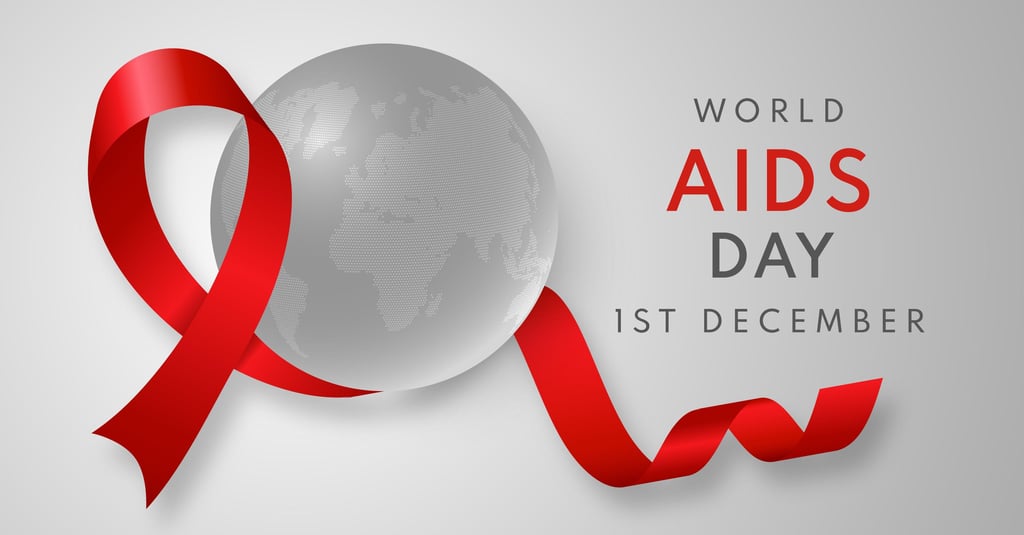Understanding World AIDS Day: Past, Present, and Prevention
Making sure that our future generations remain safe from AIDS


History and Impact of AIDS Worldwide
The history of Acquired Immunodeficiency Syndrome (AIDS) is marked by significant milestones and shifting perceptions. The disease was first identified in the early 1980s, with cases among gay men, leading to initial misinterpretations and stigmatization. By 1981, the Centers for Disease Control and Prevention (CDC) reported cases of Pneumocystis pneumonia in previously healthy individuals, which eventually was linked to a new immunodeficiency syndrome. The term "AIDS" was officially adopted in 1982, catalyzing global awareness and response.
As the epidemic progressed, it became apparent that AIDS was not confined to any single demographic. Over the following decades, the disease spread worldwide, with sub-Saharan Africa emerging as the epicenter. According to the latest Global AIDS Update, approximately 38 million people live with HIV globally, with about 1.7 million new infections reported in 2019 alone. In India, the situation has also evolved; while the country has faced significant challenges—over 2.1 million people living with HIV in 2020—the effective implementation of prevention and treatment programs has led to a decline in new cases over the years.
The global response to AIDS has undergone significant transformations. The establishment of the Joint United Nations Program on HIV/AIDS (UNAIDS) in 1996 marked a collaborative approach to combating the epidemic. Major milestones include the introduction of antiretroviral therapy (ART), approved in 1996, which dramatically improved life expectancy for those living with HIV. Treatment access policies have been crucial in addressing the epidemic, particularly in resource-limited settings, and aim to achieve a 90-90-90 target: 90% of those with HIV diagnosed, 90% of those diagnosed on treatment, and 90% of those on treatment achieving viral suppression by 2020.
The socio-cultural impact of AIDS has also been profound, influencing public health policy, research funding, and the role of communities in care and support. As awareness and understanding have increased, shifting perceptions have contributed to reducing stigma around the disease, although challenges remain. Thus, the history and continued fight against AIDS encapsulate not only medical advances but also significant social changes worldwide.
Understanding HIV: The Virus Behind AIDS
Human Immunodeficiency Virus (HIV) is a virus that critically compromises the immune system, making individuals more susceptible to infections and diseases. The virus works by attacking and destroying CD4 cells, which are crucial for immune response. Over time, if untreated, HIV can lead to Acquired Immunodeficiency Syndrome (AIDS), a condition characterized by severe immunodeficiency and its associated opportunistic infections.
There are two main types of HIV: HIV-1 and HIV-2. HIV-1 is the most prevalent strain globally and is responsible for the majority of HIV infections, while HIV-2 is less common and primarily found in West Africa. The modes of transmission for HIV include unprotected sexual contact with an infected person, sharing needles, and from mother to child during childbirth or breastfeeding. Understanding these modes of transmission is vital for developing effective prevention strategies.
Globally, the number of people living with HIV is staggering, with approximately 38 million individuals infected as of recent estimates. In India, the prevalence is concerning, particularly among vulnerable groups such as men who have sex with men, sex workers, and intravenous drug users. Understanding the demographics of HIV infection highlights the need for targeted prevention interventions and educational campaigns.
Early diagnosis of HIV is crucial because it allows for timely antiretroviral therapy (ART), which can manage the infection effectively and improve the quality of life for those affected. Advancements in testing technologies, such as rapid tests and self-testing kits, have made it easier to diagnose HIV, promoting earlier treatment and reducing the likelihood of transmission. Conversely, untreated HIV can lead to severe health complications and accelerate the progression to AIDS, underscoring the importance of regular testing and prompt medical intervention.
The Importance of Proper Sex Education and Safe Practices
Comprehensive sex education serves as a critical pillar in the prevention of HIV transmission and other sexually transmitted diseases (STDs). By providing accurate information about sexual health, such educational programs empower individuals, especially young people, to make informed choices regarding their sexual activities. Understanding safe sex practices, such as the correct usage of condoms, is paramount in reducing the risk of HIV and STDs. Condoms act as a barrier that not only prevents pregnancy but also significantly lowers the likelihood of disease transmission.
Moreover, regular health check-ups are essential for detecting any potential issues early and facilitating timely care. These appointments encourage open discussions about sexual health, allowing individuals to address concerns and myths surrounding STDs and HIV. Unfortunately, societal stigma often hampers candid conversations about sexual health, leading to misconceptions. Education can combat these myths, replacing ignorance with knowledge and fostering a society that promotes safe and responsible behaviors.
Numerous educational programs and initiatives have demonstrated the effectiveness of comprehensive sex education in promoting safe practices. For instance, evidence-based curriculums that involve parent engagement and community involvement have shown notable success in improving understanding of sexual health among adolescents. Such programs not only provide essential information but also create a supportive environment for open dialogue about sexual health, further normalizing discussions that can lead to better practices and preventive measures.
In this way, the significance of proper sex education cannot be overstated. It serves not only to inform individuals about safe practices but also to dismantle harmful myths and reduce the stigma associated with discussing sexual health. By doing so, we can pave the way for a generation that is equipped with the knowledge and resources to protect themselves from HIV and other STDs, ultimately contributing to a decrease in infection rates.
Symptoms, Causes, and Preventive Measures for AIDS
The symptoms of Acquired Immunodeficiency Syndrome (AIDS) manifest as a progression from early HIV infection, often marked by flu-like signs such as fever, fatigue, and swollen lymph nodes. As the virus advances, it severely compromises the immune system, leading to more serious health complications. Common symptoms of AIDS include prolonged fever, severe weight loss, fatigue, recurrent infections, and the development of opportunistic infections, which can be life-threatening. It is crucial to differentiate these symptoms from those experienced during the initial stages of HIV, which are typically less severe and may not prompt immediate medical attention.
Individuals are at a higher risk of developing AIDS due to various factors, including socioeconomic issues, limited access to healthcare, and certain lifestyle choices. Populations particularly vulnerable to HIV infection include marginalized communities often lacking robust healthcare services or education regarding the disease. The interplay between these elements accentuates the need for targeted interventions that address both health and social determinants. Moreover, understanding the risk factors associated with the progression of HIV to AIDS is vital for implementing effective prevention strategies.
Preventive measures play an essential role in combating the spread of HIV and ultimately preventing the development of AIDS. Regular screenings and tests allow for early detection, vital in managing health outcomes. Additionally, individuals should prioritize open communication regarding health statuses with their partners to minimize risk. The consistent use of preventive methods, such as pre-exposure prophylaxis (PrEP) and safe sex practices, is also paramount. Lastly, community support systems provide indispensable assistance for those affected by AIDS, offering resources, education, and emotional support that further bolster preventive efforts and enhance quality of life.
